- Blog
- Bombas Marketing Breakdown: How They Turned Socks Into a Social Movement?
Bombas Marketing Breakdown: How They Turned Socks Into a Social Movement?
Table of Contents
When you think of breakout DTC brands, socks probably aren’t the first category that comes to mind. But Bombas changed that.
They took the least sexy product in your drawer and turned it into a symbol of impact, comfort, and community.
Bombas built a business where mission isn’t a marketing angle—it’s the business model. One pair bought, one pair donated. Over 150 million times. And they didn’t just grow—they scaled with precision, expanding into new categories and new channels, all while keeping purpose at the center.
So how did they take something as ordinary as socks and build a brand people brag about?
Let’s break it down!
1. Use mission-driven branding
Bombas’ one-for-one model is the structural foundation of their brand.
The donated products are purpose-built: reinforced seams, antimicrobial fabric, darker colors—designed specifically for people without reliable access to clean clothing. This operational alignment builds credibility, not just goodwill.
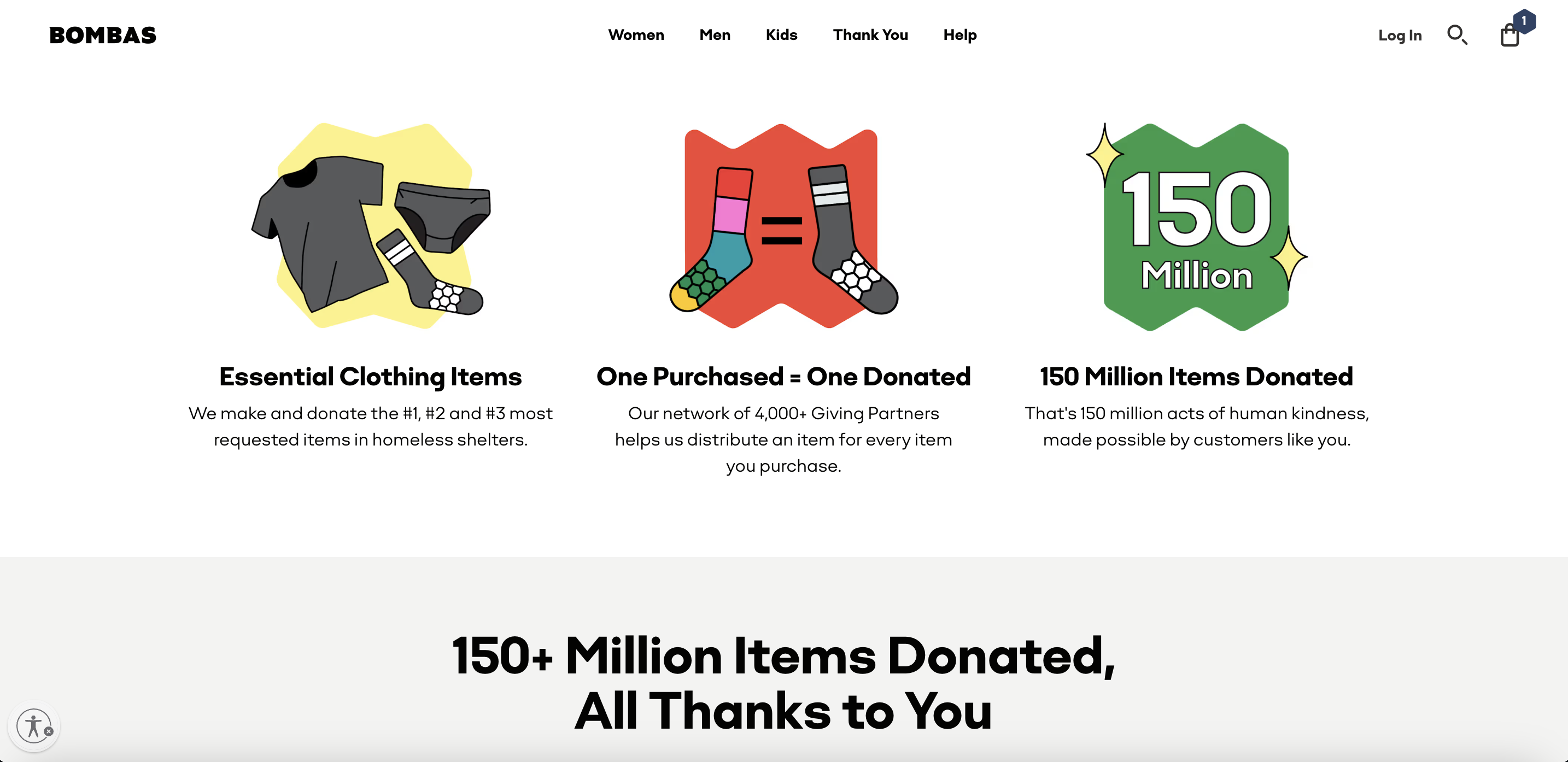
Purpose is reinforced at every stage of the customer journey. Packaging, confirmation emails, and even PDPs communicate the donation impact.
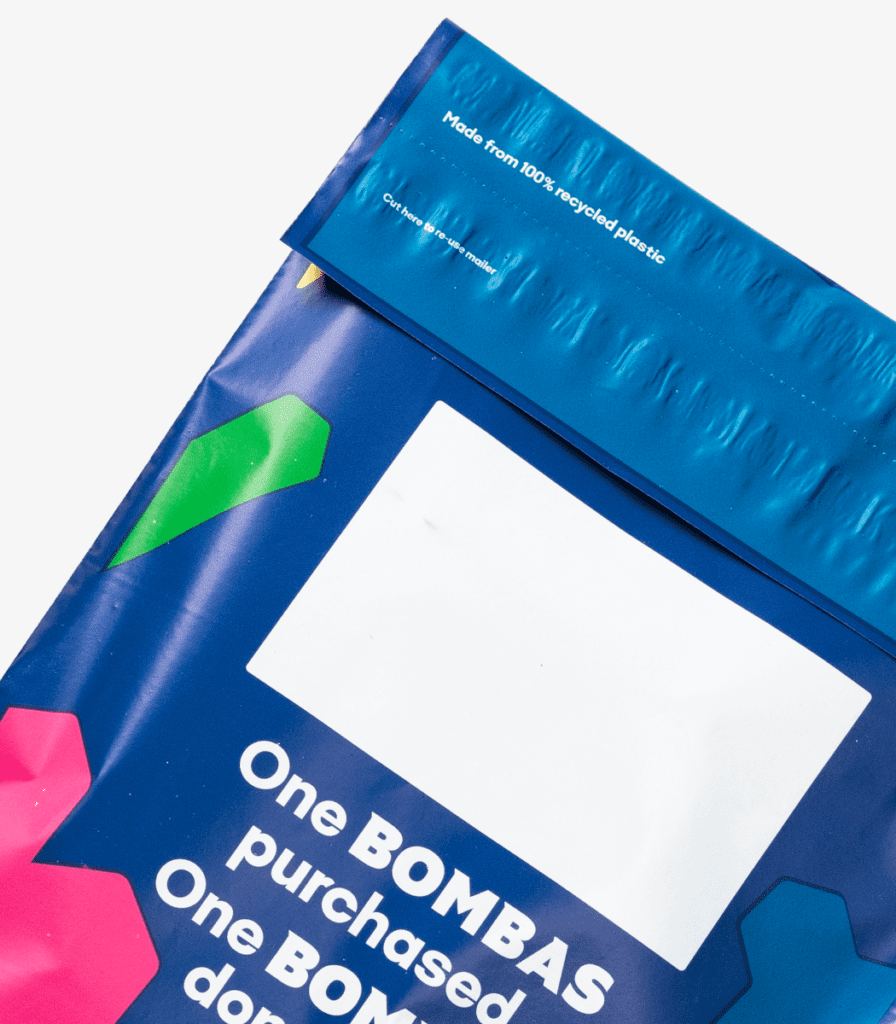
This messaging strategy taps into a proven consumer behavior: according to Zeno Group, customers are 4x more likely to purchase from a purpose-driven brand, and 6x more likely to protect and advocate for it.
For Bombas, the result is higher engagement, more repeat purchases, and deeper brand equity. This isn’t about charity—it’s about strategic differentiation in a saturated category.
💡 Takeaway: Purpose that’s measurable, product-aligned, and consistently communicated can shift perception, increase lifetime value, and become a true growth lever. Find a mission your customers genuinely care about and make sure it shows up clearly across your products, messaging, and customer experience.
2. Be better in the basics
Obviously, Bombas didn’t invent anything new. They just made socks better. Their focus is on practical, incremental improvements that directly impact comfort and performance.
The signature features are clear:
- cushioned soles for support,
- seamless toes to prevent friction,
- honeycomb arch support for stability, and
- a design that stays in place throughout the day.
These aren’t marketing buzzwords. They’re small details that solve the common issues people have with basic apparel.
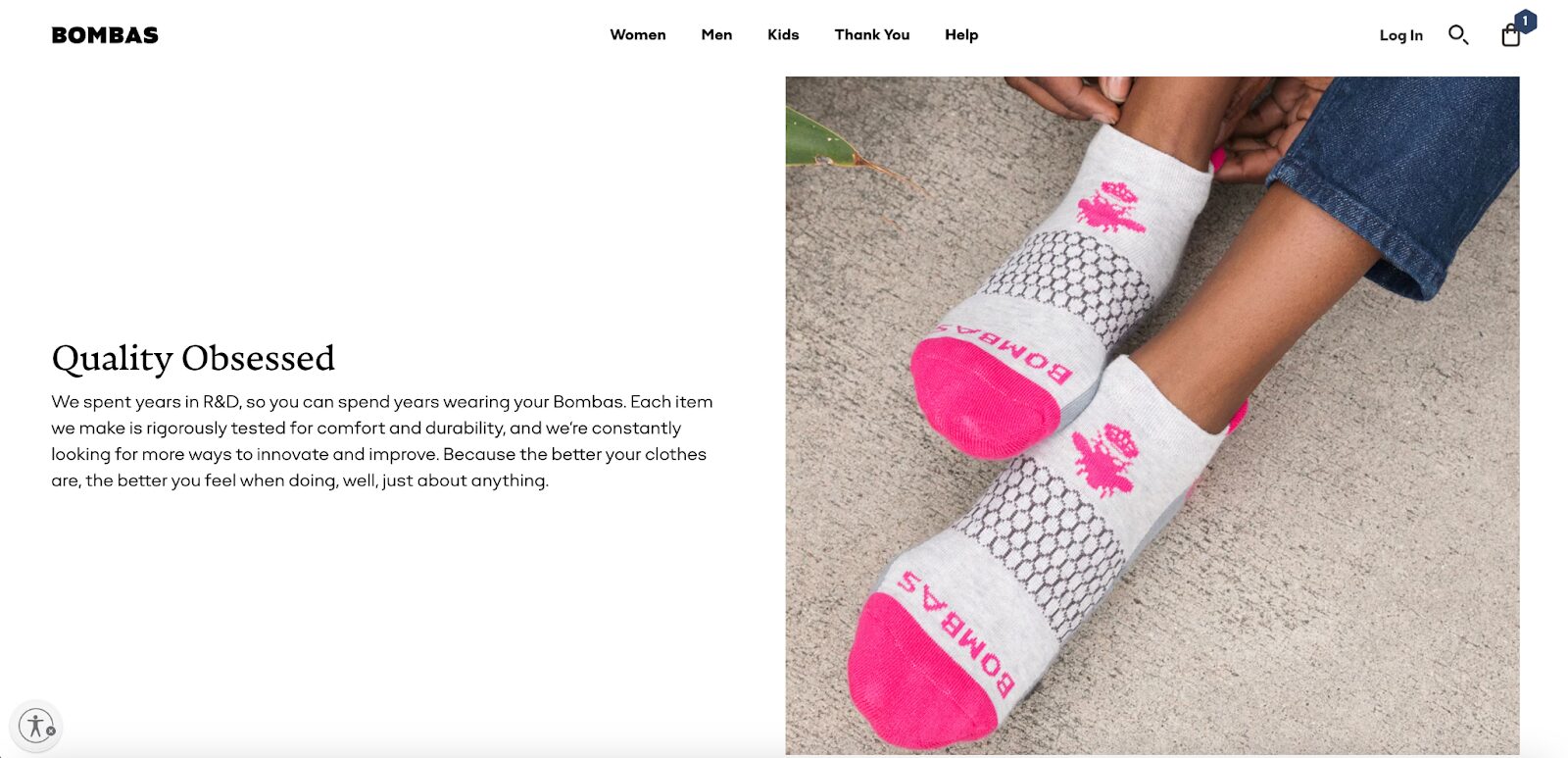
Their product range is built around function. Whether it’s socks for running, lounging, or everyday wear, each category is tailored to how people actually use them. The same logic applies to their underwear and T-shirts—soft fabrics, clean construction, and a fit that holds up over time.
💡 Takeaway: Innovation doesn’t need to be complex (or even new). You don’t have to invent a groundbreaking product to stand out. By pinpointing and addressing real user pain points, you can create products that earn loyalty on experience alone.
3. Prioritize cohesion in your channel strategy
Each platform serves a defined function, but the message remains consistent: everyday comfort, backed by social impact.
Meta (Facebook & Instagram) is their most performance-driven channel. Campaigns are segmented by audience tier—new prospects, re-engagement, and returning buyers.
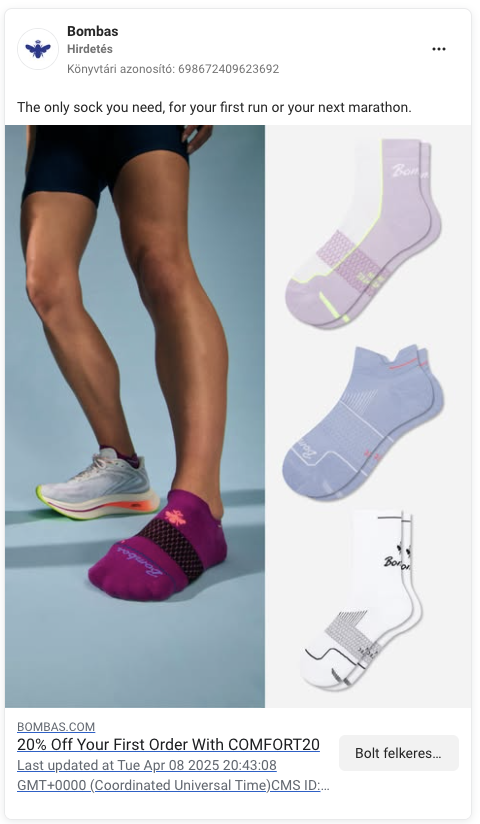
Bombas uses Lookalike and behavioral targeting to guide users through the funnel, supported by clean visuals and comfort-focused creative.
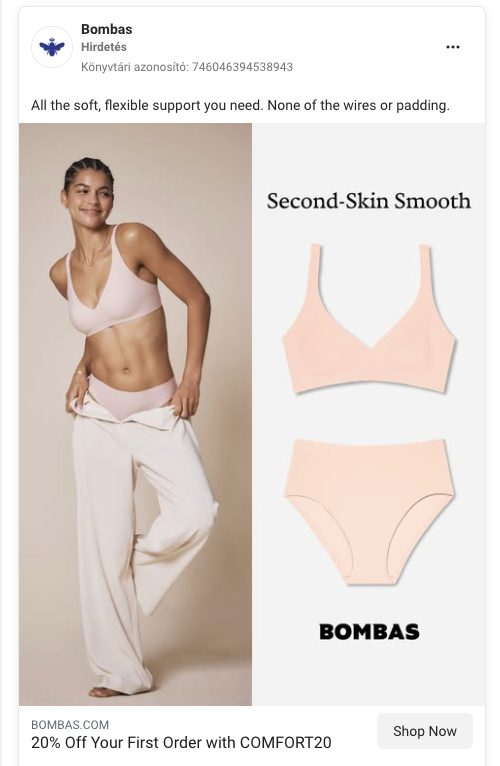
TikTok is less about conversion and more about cultural presence. It’s where Bombas connects with younger audiences through short, creator-led content. Try-ons, morning routines, and unboxings highlight the product without overproducing the message.
@bombas Did we get it right?
♬ original sound - Bombas
Podcasts give the brand voice added credibility. Bombas partners with trusted shows like Pod Save America and Marketing Trends, using host-read ads that feel personal and value-driven. The message is always the same: comfort, mission, and everyday use—delivered with authenticity and supported by promo codes for attribution.
💡Takeaway: Don’t treat channels as isolated tactics, instead treat them as parts of a larger narrative. By assigning each platform a clear role and maintaining consistent messaging, you can build a brand experience that’s both scalable and cohesive.
4. Scale authenticity through strategic partnerships
Bombas approaches influencer marketing as a long-term investment in credibility.
Rather than pursuing celebrity reach or one-off viral moments, the brand prioritizes creators who embody its core values—comfort, purpose, and real-life utility. The focus is on relevance and resonance, not just audience size.
YouTube continues to be a high-performing channel in this strategy. Bombas has partnered with over 450 creators via platforms like Agentio, choosing content styles that prioritize narrative and build trust. These collaborations consistently outperform traditional ads, proving that authentic storytelling drives deeper engagement.
A notable extension of this approach is their partnership with Strava. Through branded fitness challenges, Bombas activates an audience that already values performance and consistency—making the brand feel native, not intrusive.
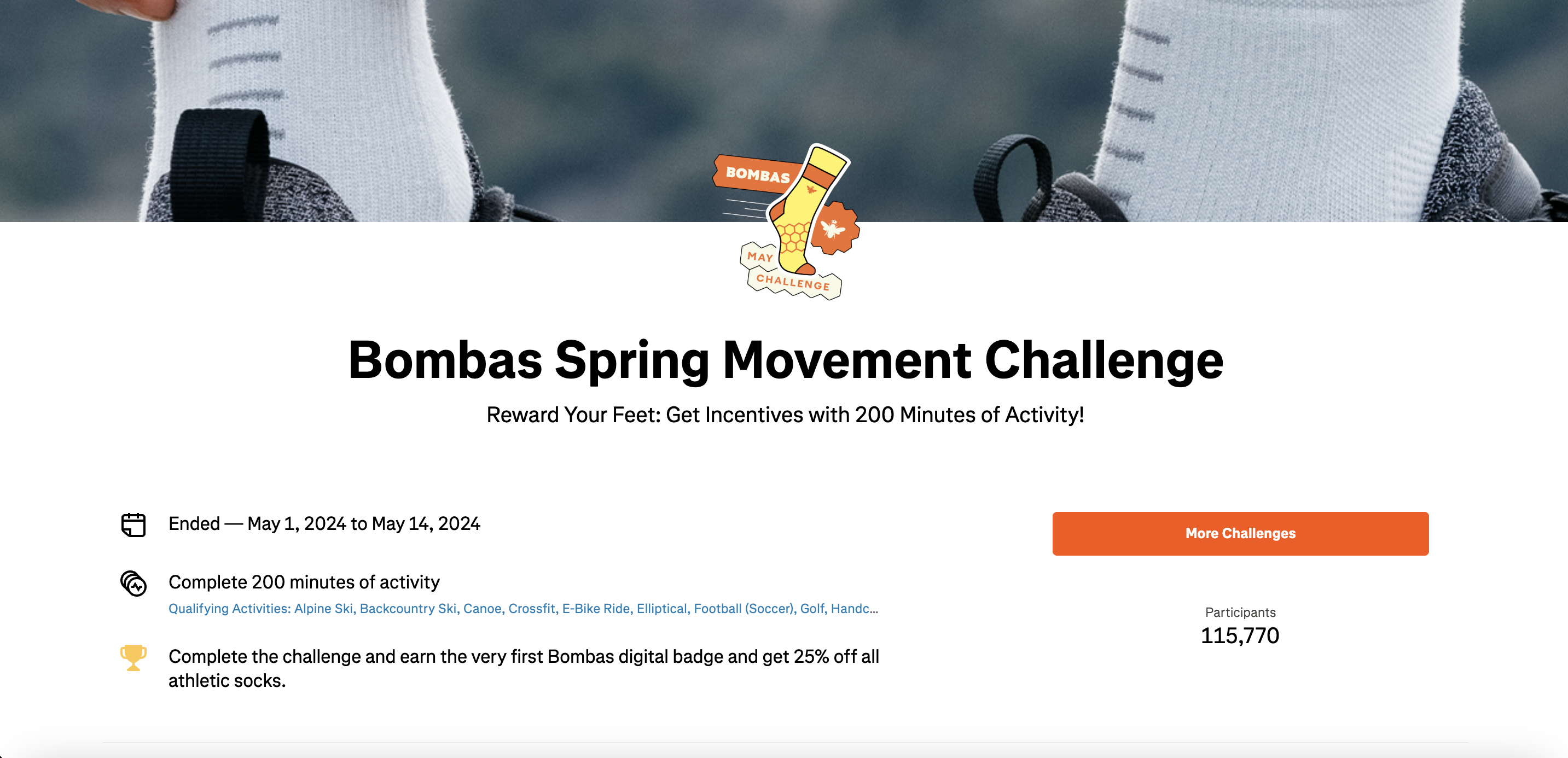
These campaigns strengthen the link between product and use-case, while organically expanding reach within a mission-aligned community.
Beyond individual platforms, Bombas supports a network of over 3,500 affiliate partners. With structured tracking and commission incentives, the program balances reach with control—protecting the integrity of the brand and messaging while scaling efficiently.
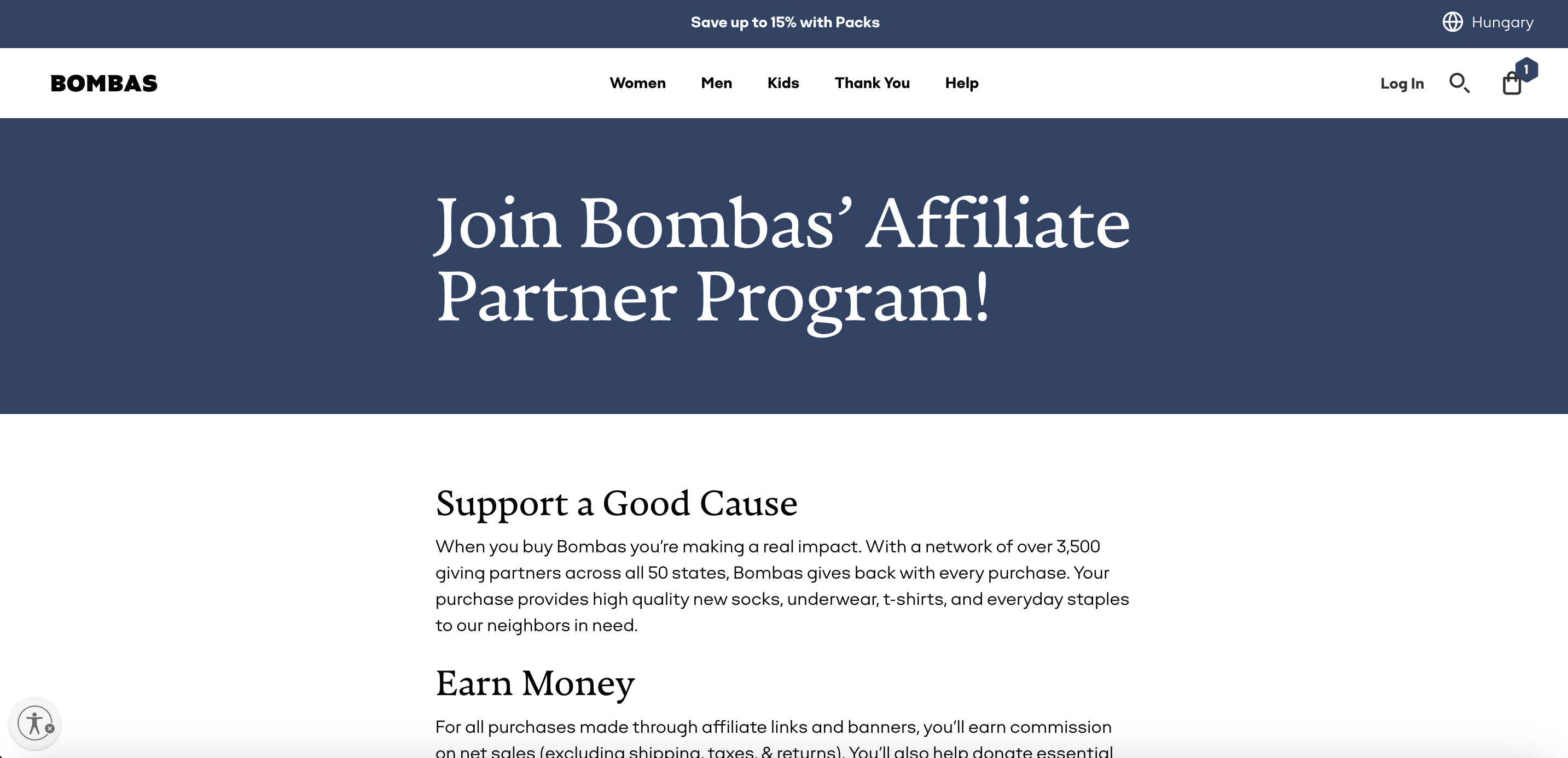
💡 Takeaway: Don’t approach influencers as media slots—treat them as long-term brand partners. Focus on creators who genuinely align with your values, and you’ll build a marketing system that drives both trust and results over time.
5. Design your website to reflect transparency
The Bombas website is designed to do more than showcase products—it minimizes friction, builds credibility, and guides the user toward purchase.
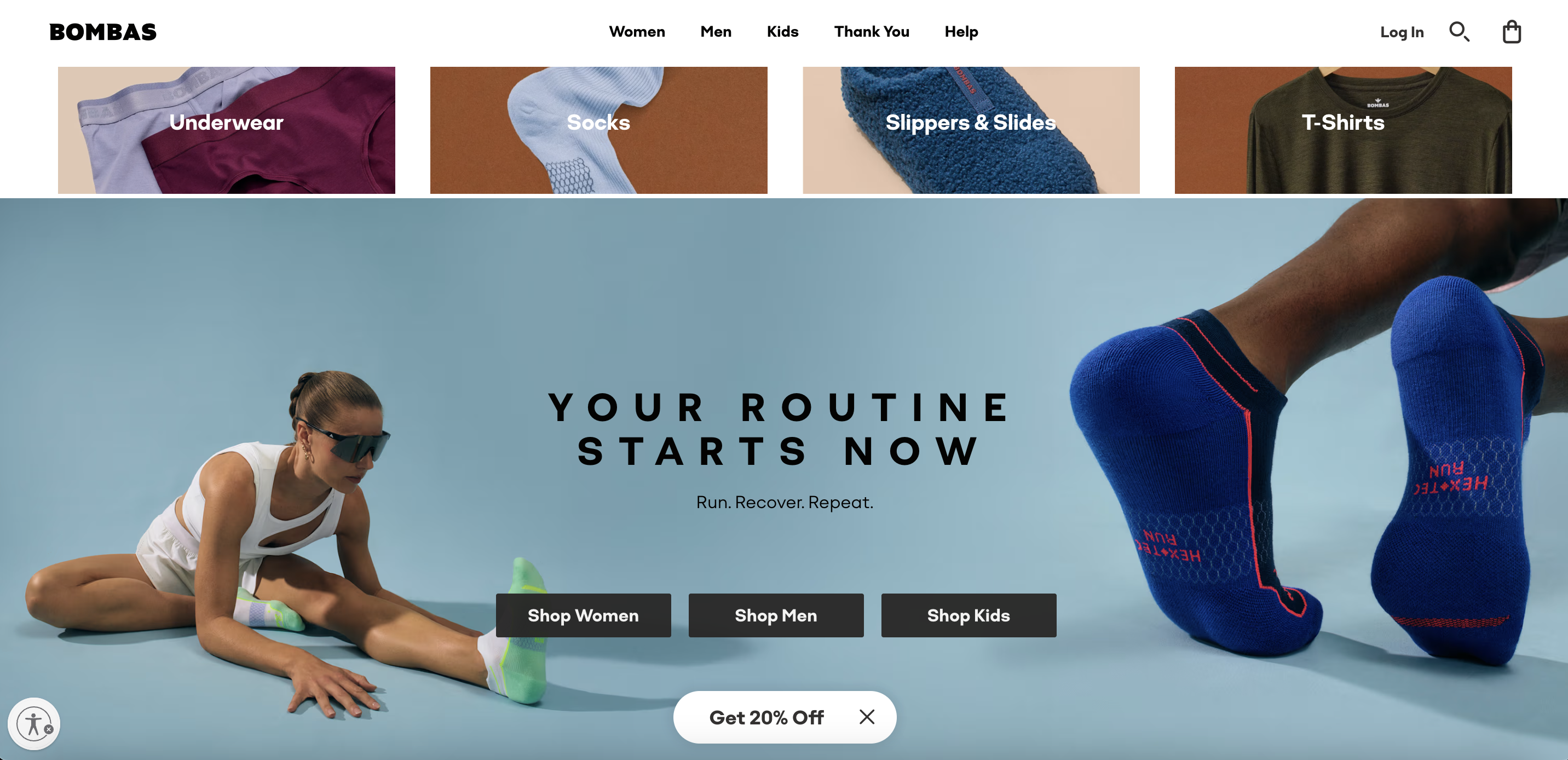
Upon arrival, visitors encounter a “Get 20% Off” discount teaser.
By clicking on the teaser, a multi-step popup appears. On the first page, they just ask “Want 20% off your first order?” If visitors reply yes, they’ll be asked to provide their email address.
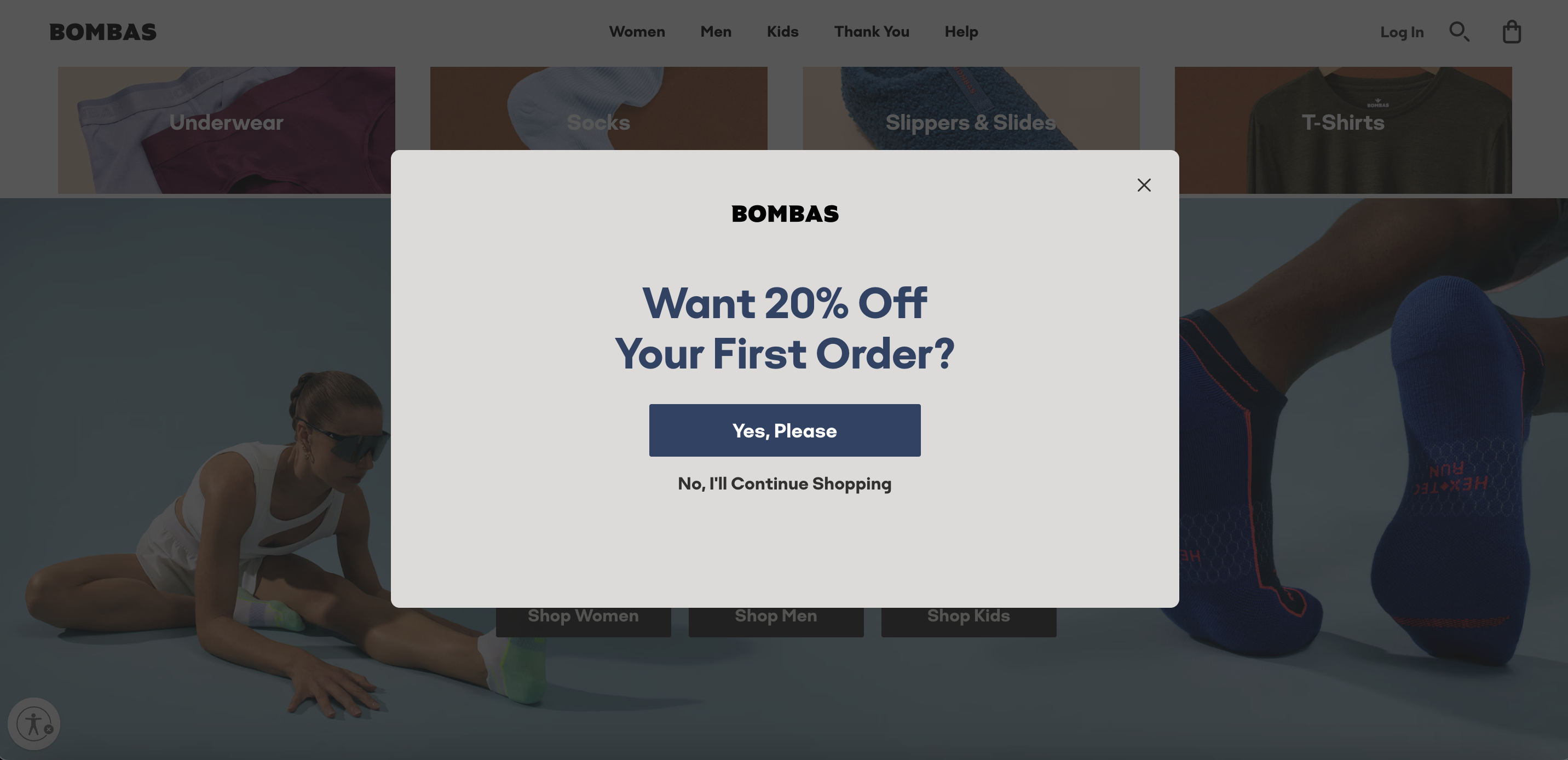
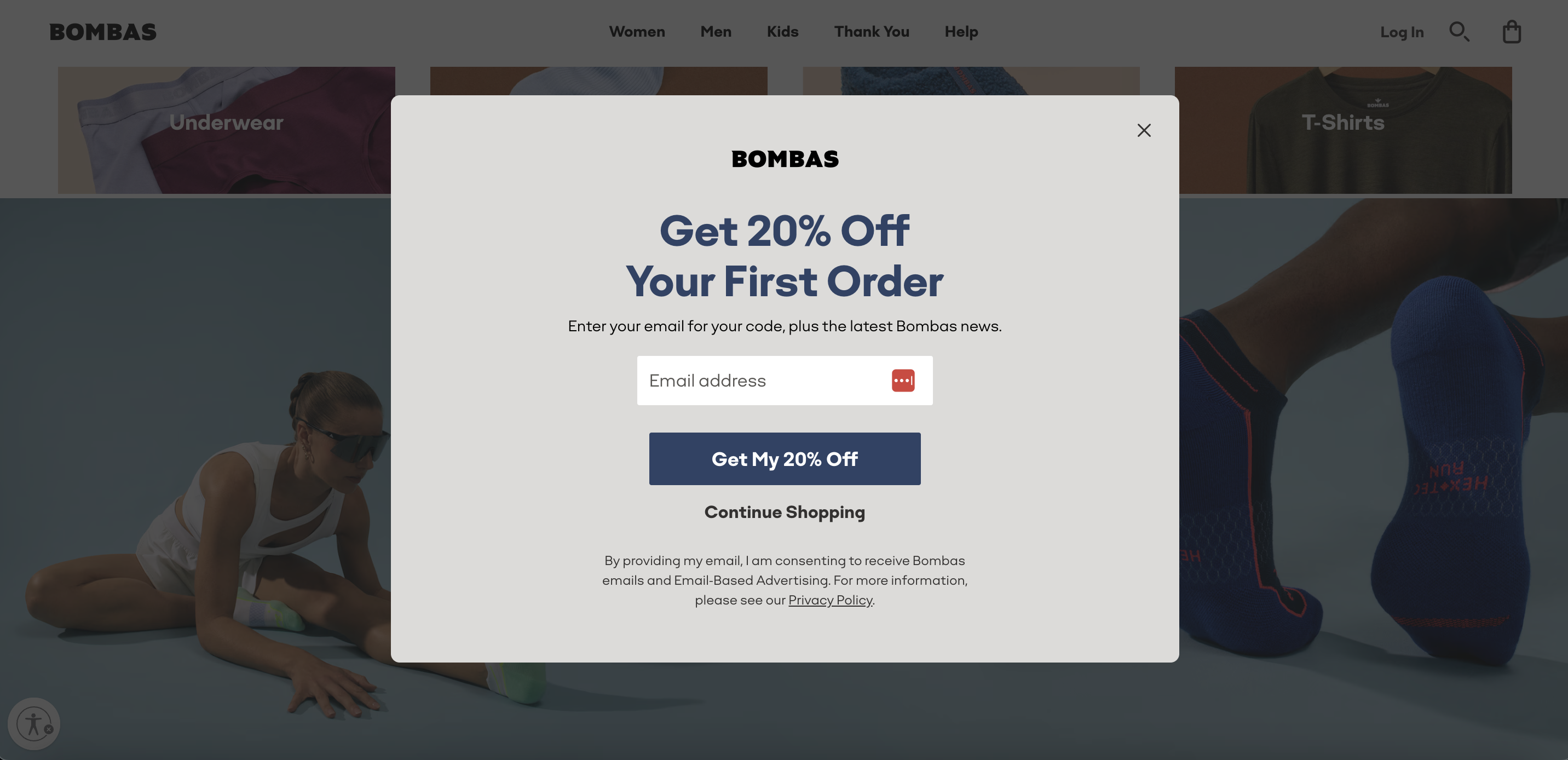
It’s a subtle, effective way to encourage engagement without interrupting the experience.
Product pages are structured for clarity and utility: each item is priced individually, with clear bundle options that reward larger purchases.

A 4-pack, for instance, comes with built-in savings, encouraging larger orders while reinforcing value perception.
The site also automatically detects the user’s browsing location and adjusts the currency accordingly. This creates a sense of ease and transparency across the shopping experience.
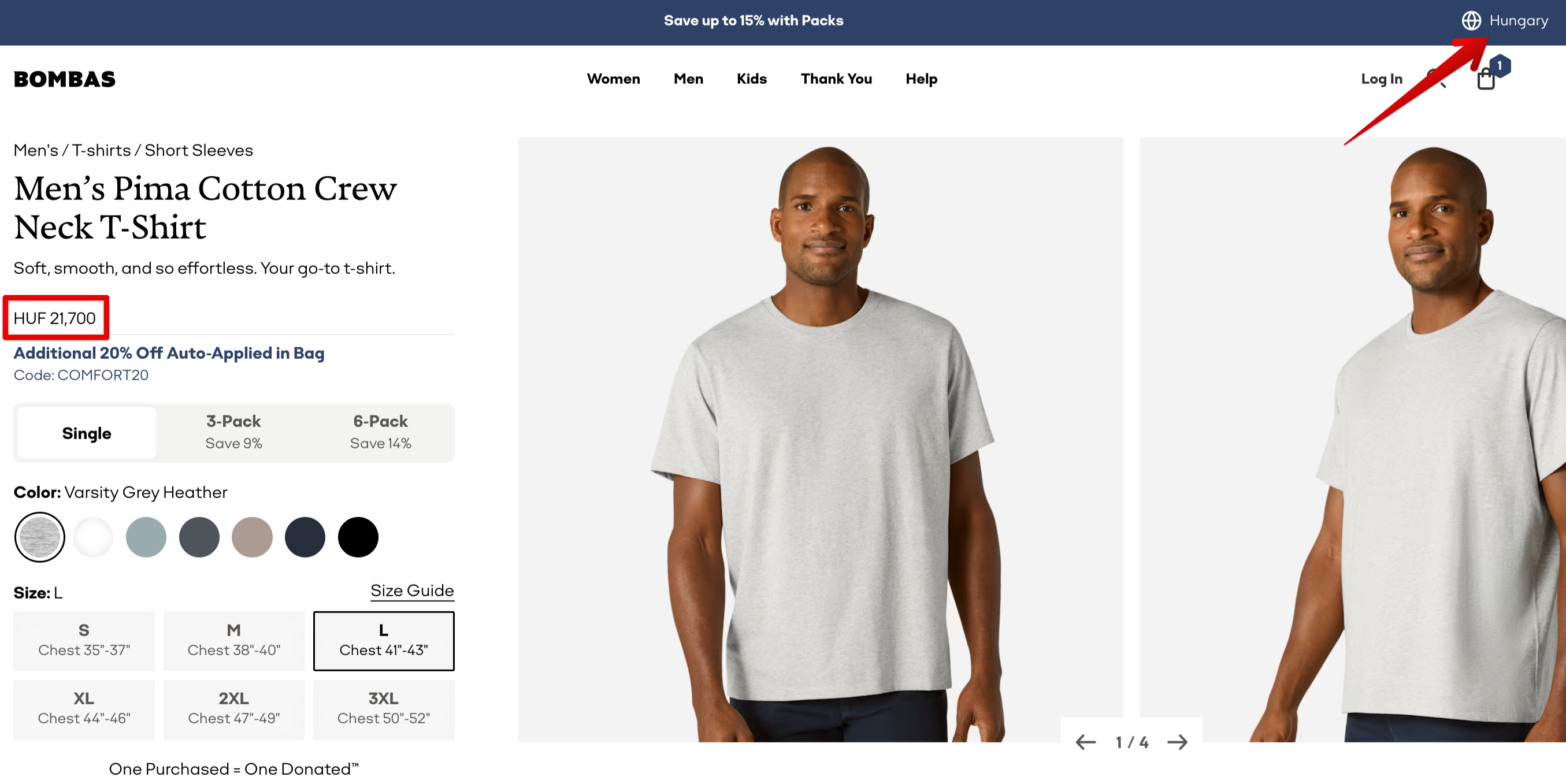
💡 Takeaway: Transparency builds trust—and trust converts. From smart incentives to clear pricing and localized details, every element of your site should make customers feel confident, informed, and in control.
6. Build loyalty with follow-through
Bombas’ post-purchase strategy is designed to reinforce trust and extend the brand’s mission beyond the sale.
Customers receive clear confirmation emails and follow-ups that emphasize both order details and donation impact, which adds emotional value to the transaction.
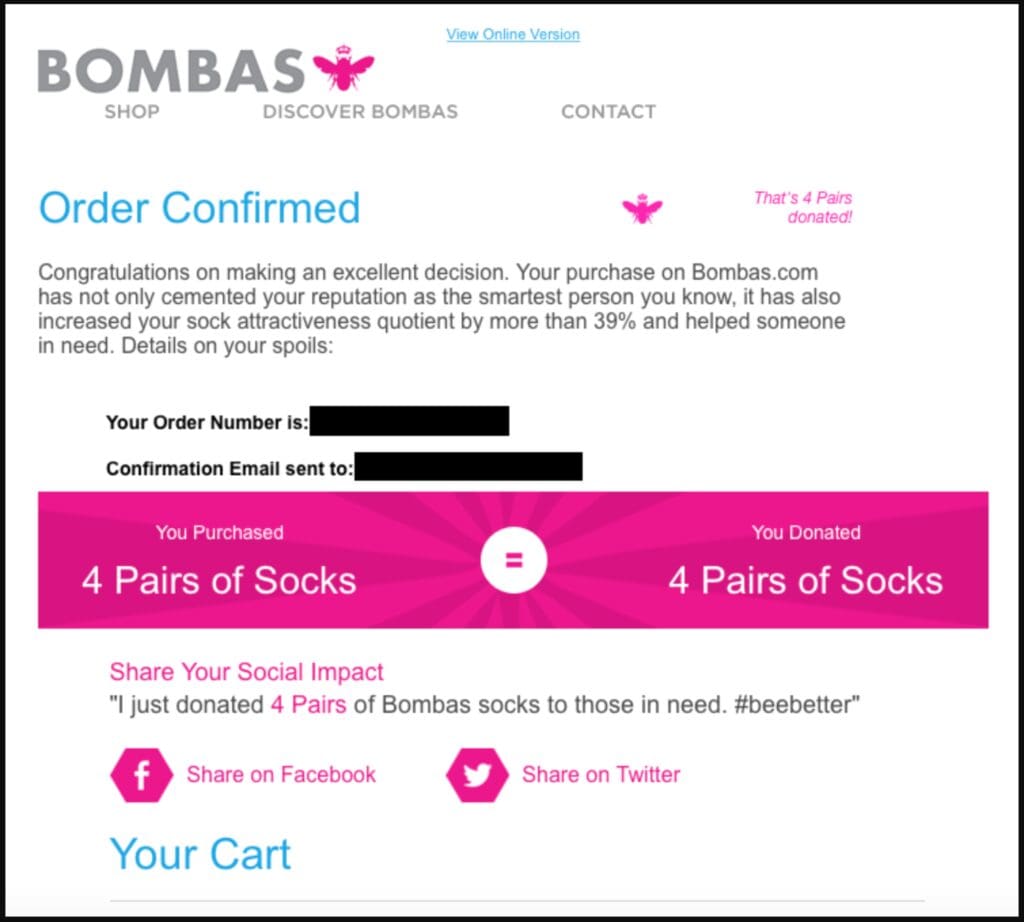
Support is handled by the brand’s Customer Happiness Team, known for fast, friendly service. Their 100% Happiness Guarantee allows for easy refunds or replacements, often without requiring returns.
In many cases, customers are encouraged to keep or donate the item, aligning customer care with Bombas’ social values.
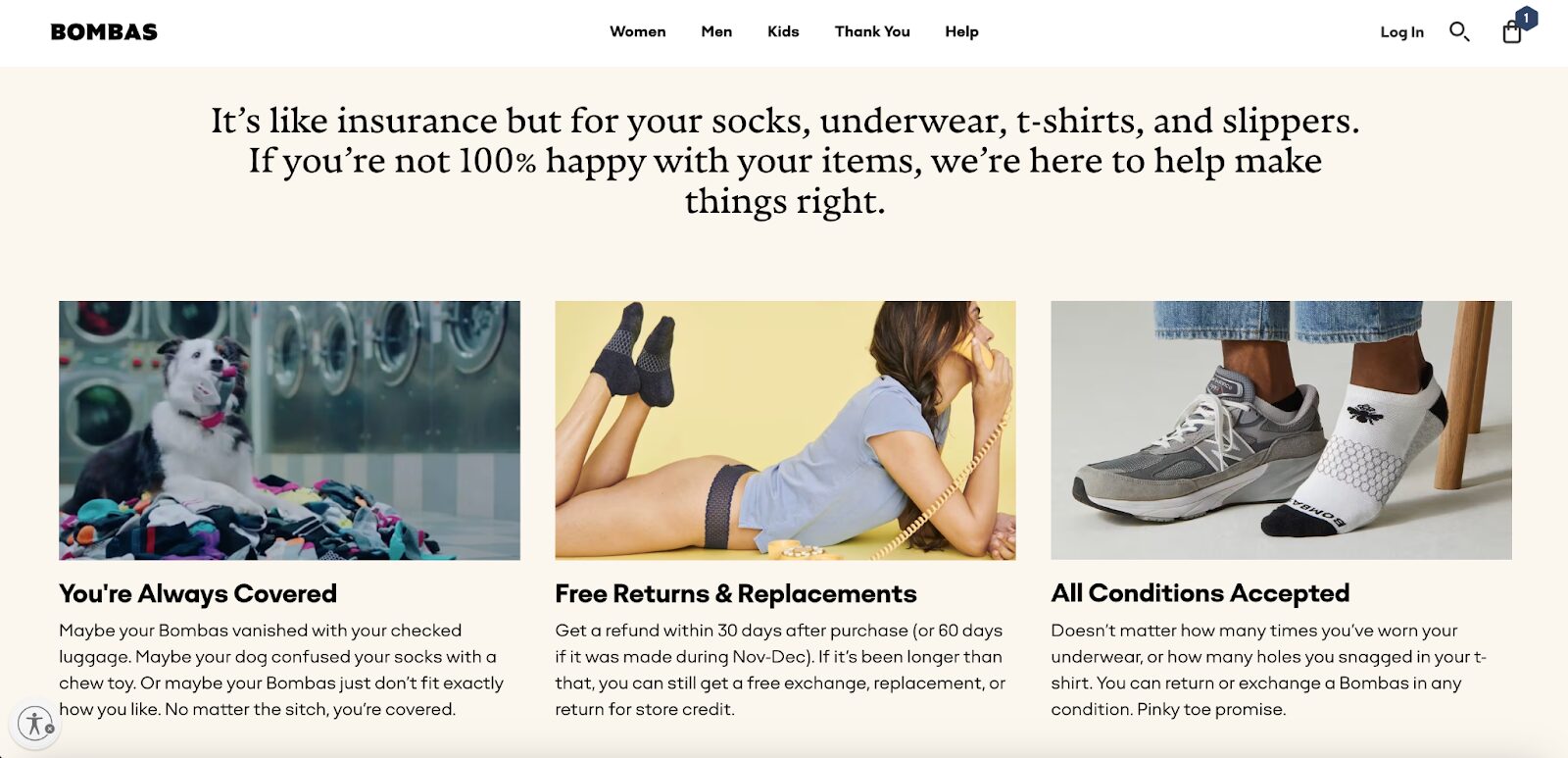
Takeaways
Bombas is a case study in how mission, product, and marketing can work in complete alignment. They didn’t just build a business around socks—they built a brand ecosystem around values, performance, and trust.
Their success isn’t the result of one standout tactic, but the cumulative effect of consistent execution:
- a mission that’s operational, not performative;
- product innovation that solves real problems;
- marketing channels that work together, not in isolation; and
- a customer experience that extends well beyond the transaction.
Bombas proves that when every touchpoint reinforces both functional value and emotional purpose, customers don’t just buy—they return, refer, and advocate. That’s how you turn a commodity into a movement—and a customer into a believer.
Learn more
Looking for more marketing breakdowns? Check out these articles:
- Olaplex Marketing Secrets: How a Beauty Brand Built a Billion-Dollar Buzz
- Goop Marketing Breakdown: How They Turned Content and Controversy Into a Cult Brand
- Lemme Marketing Strategy: How Kourtney Kardashian Built a Supplement Brand That Went Viral
- KEEN Footwear’s Marketing Playbook: From Sandals to a Movement
- KHY by Kylie Jenner Marketing Breakdown: What’s Fueling the Hype & What’s Falling Apart
- SodaStream Marketing Breakdown: Sustainability, Partnerships & Bold Campaigns
Migration has never been easier
We made switching a no-brainer with our free, white-glove onboarding service so you can get started in the blink of an eye.
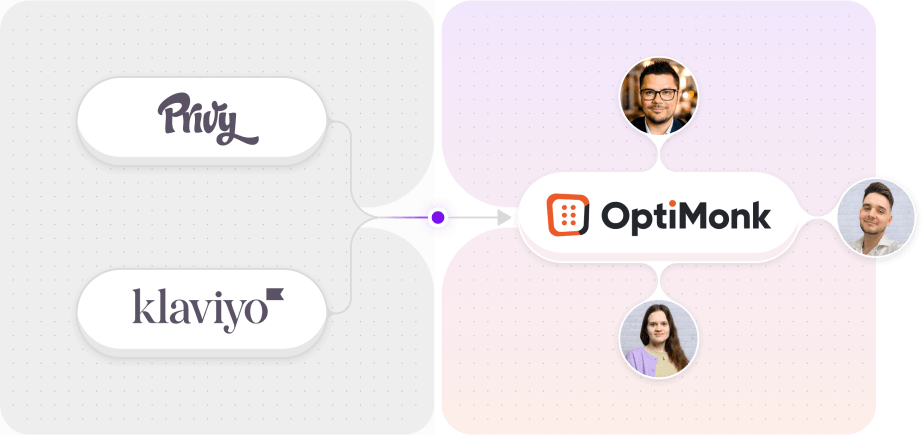
What should you do next?
Thanks for reading till the end. Here are 4 ways we can help you grow your business:
Boost conversions with proven use cases
Explore our Use Case Library, filled with actionable personalization examples and step-by-step guides to unlock your website's full potential. Check out Use Case Library
Create a free OptiMonk account
Create a free OptiMonk account and easily get started with popups and conversion rate optimization. Get OptiMonk free
Get advice from a CRO expert
Schedule a personalized discovery call with one of our experts to explore how OptiMonk can help you grow your business. Book a demo
Join our weekly newsletter
Real CRO insights & marketing tips. No fluff. Straight to your inbox. Subscribe now
- Posted in
- Marketing Breakdowns
Partner with us
- © OptiMonk. All rights reserved!
- Terms of Use
- Privacy Policy
- Cookie Policy













